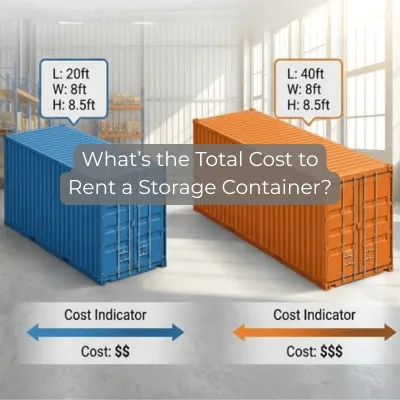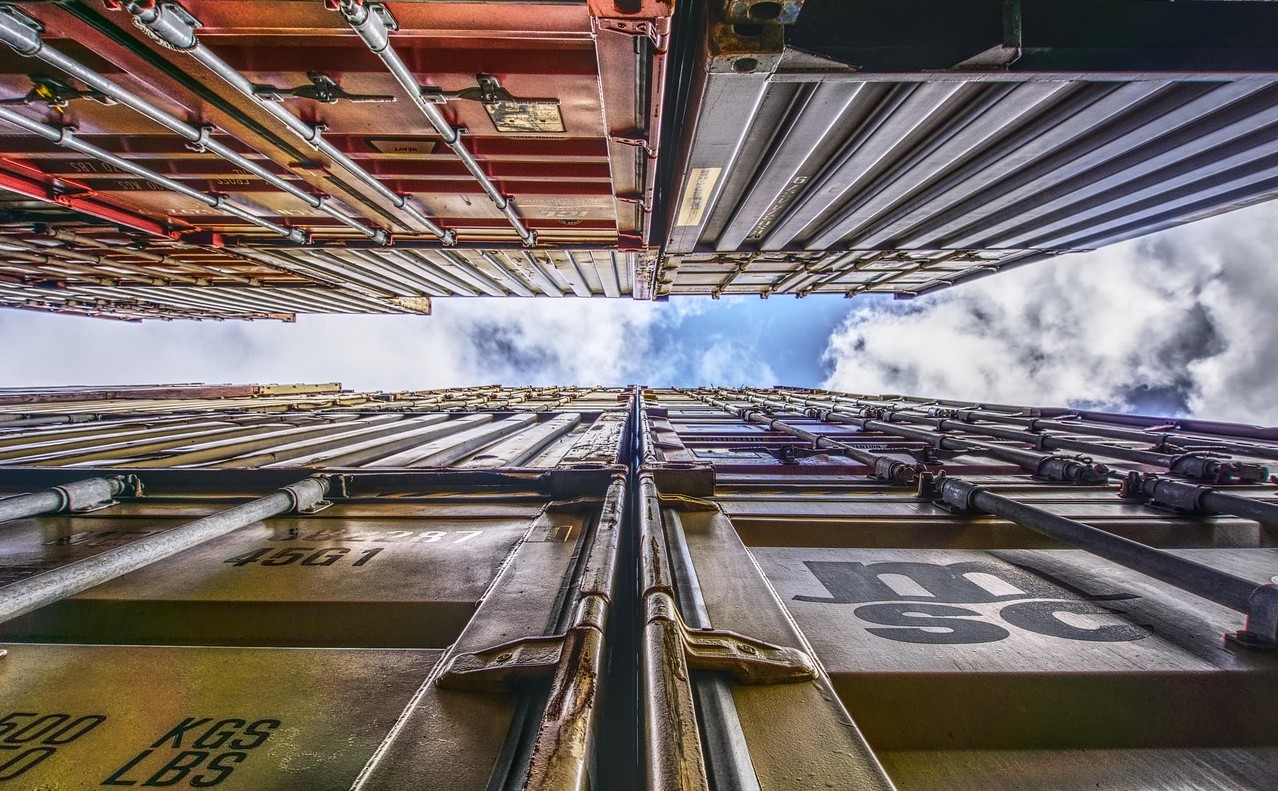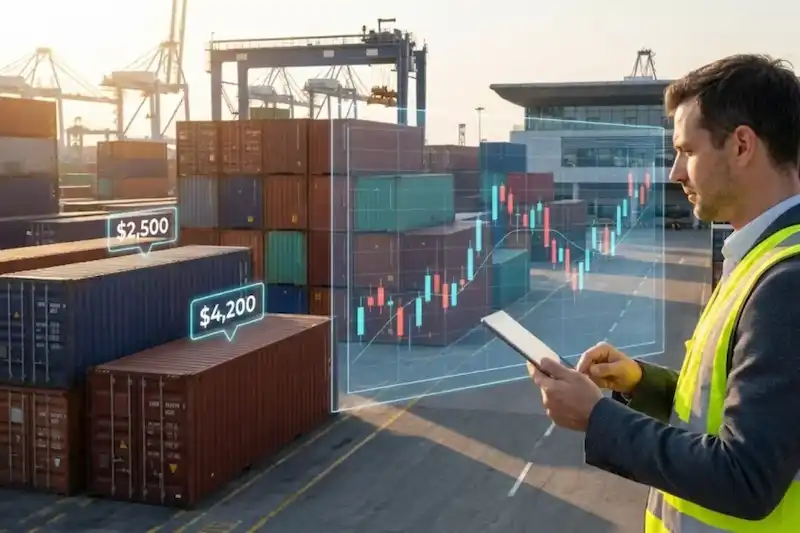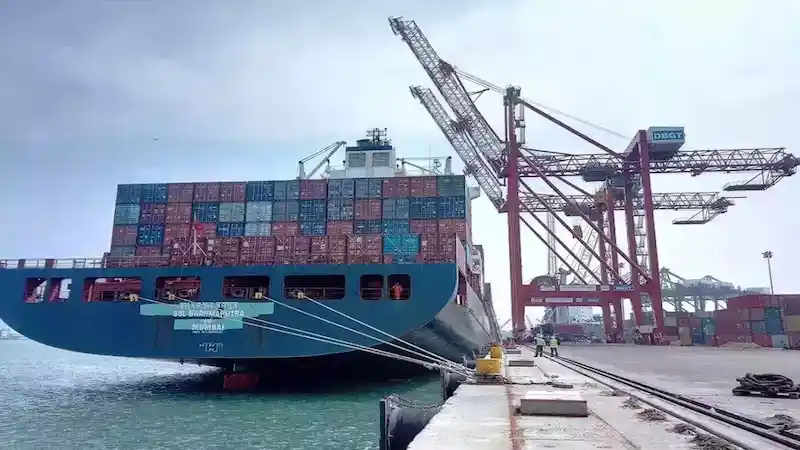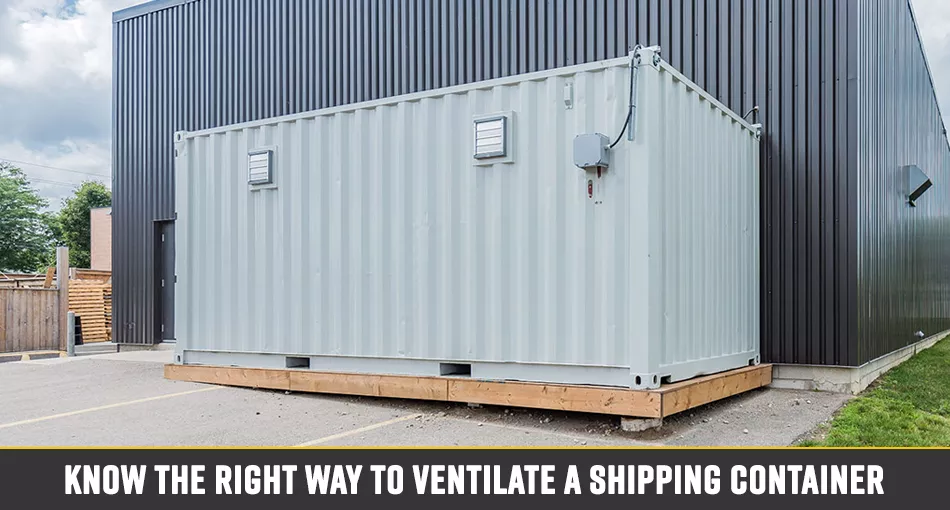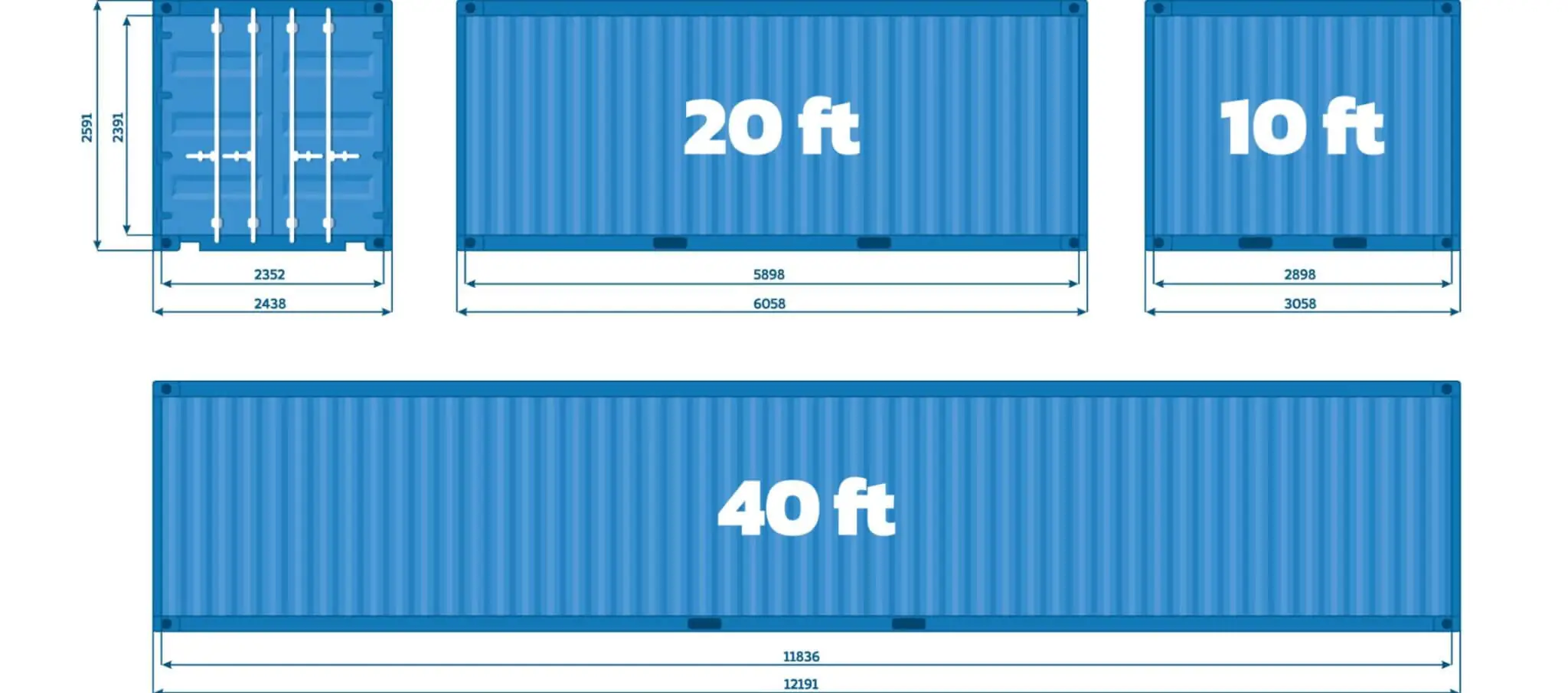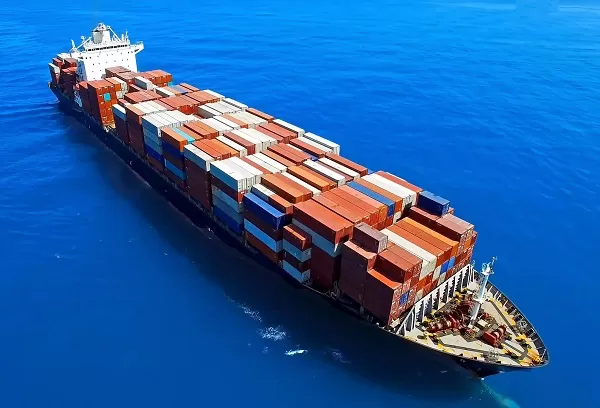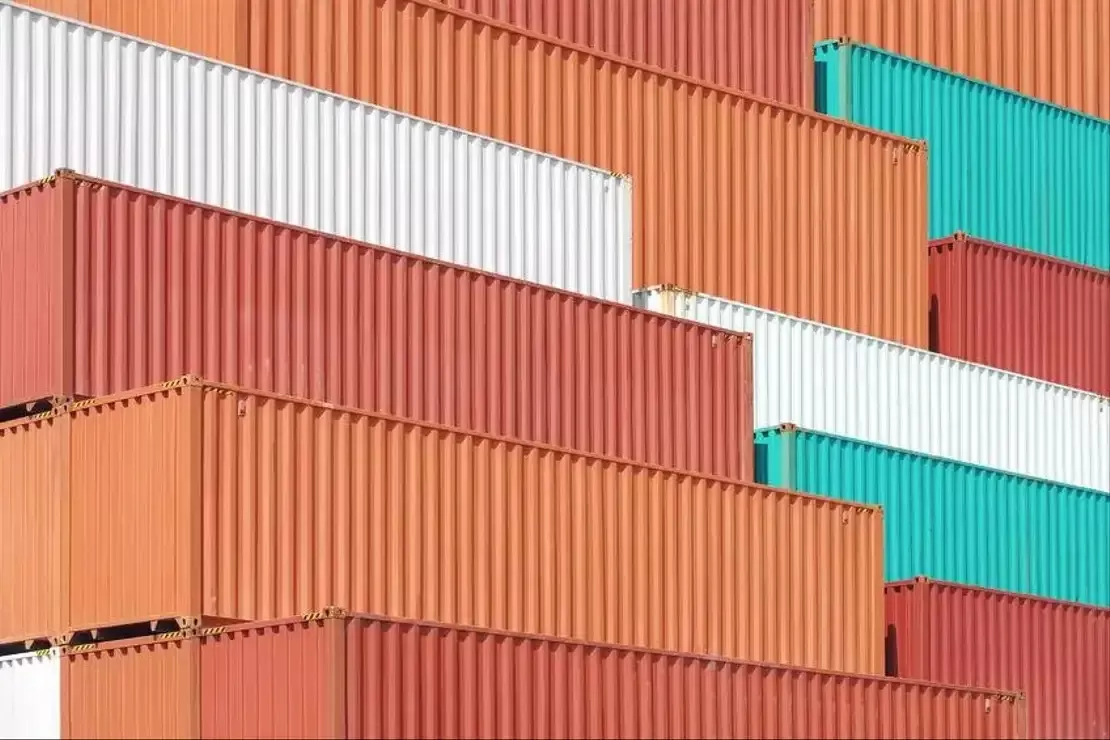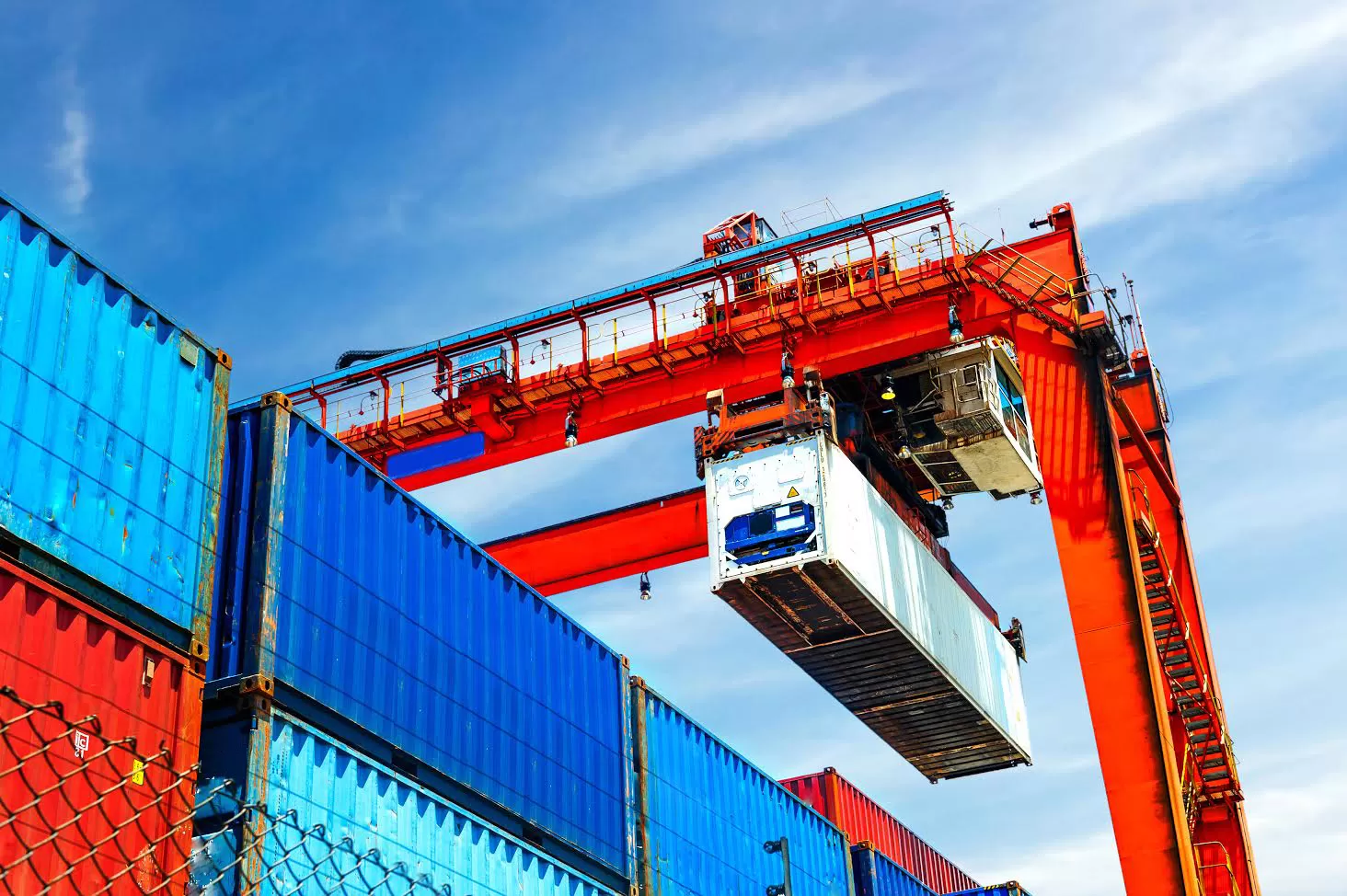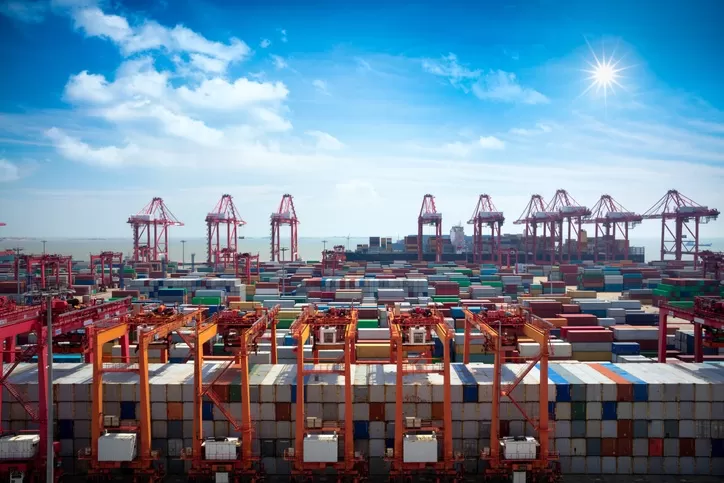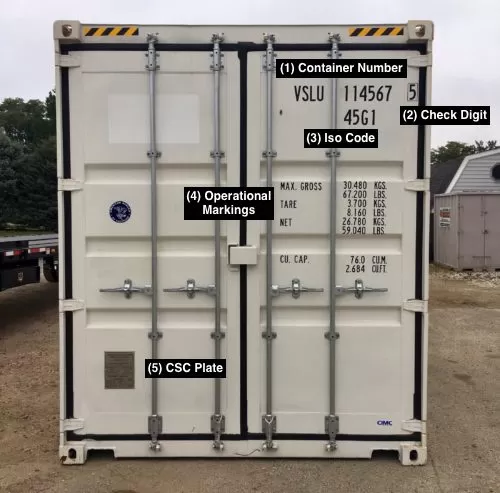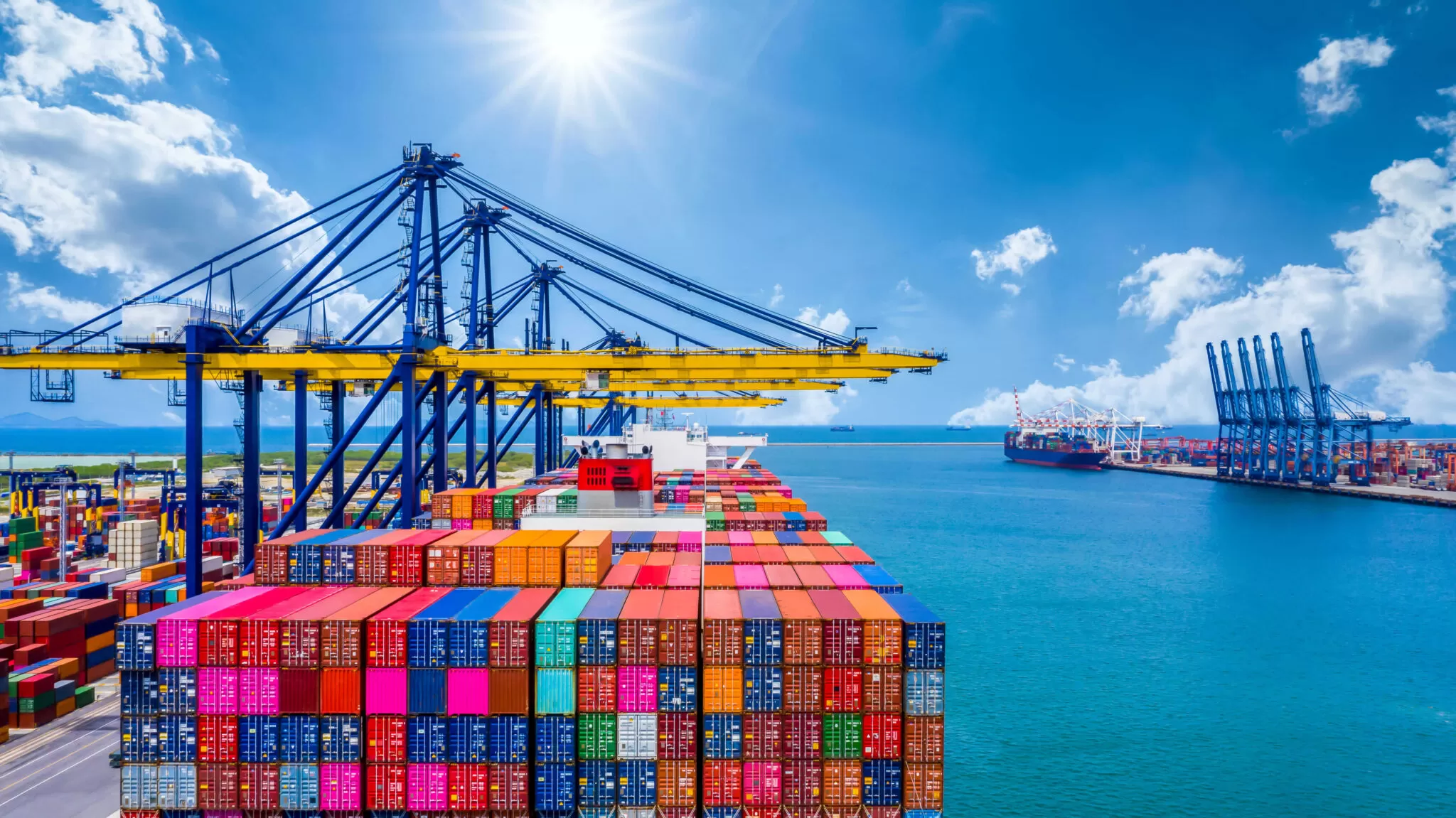How Much Does a Shipping Container Underground Bunker Cost

The idea of having your own underground bunker to protect from natural disasters or even bombs is insane, but have you ever thought about what it would take to create one and how much it will cost? Not an arm and leg, if you choose shipping containers as your project foundation.
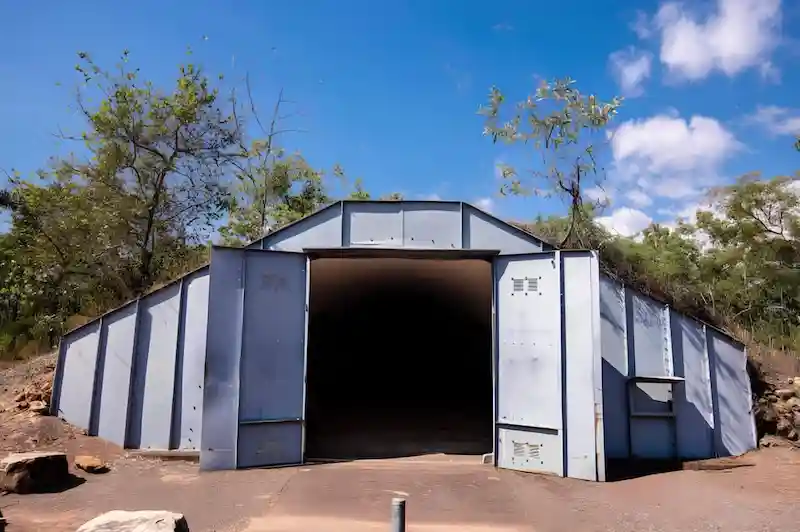
Typical Price Range for Building a Container Underground Bunker
The cost of building a shipping container underground shelter usually falls between $35,000 and $100,000 or more and depends on:
- excavation;
- the shipping container itself (new or used);
- any modifications;
- waterproofing and ventilation;
- additional features like plumbing, electricity, or solar power.
The final price comes down to your vision, so if you want to build a minimalist emergency hideout, it would set you back a few thousand dollars, but if you need a bunker with all the bells and whistles, the costs will quickly climb.
Factors Influencing the Cost of a Shipping Container Underground Bunker
The costs to build an underground bunker feel like a moving target, and a lot depends on the choices you make and the conditions of your building site. Several factors will influence the final price.
Size and Type of Container Used
The size of the container is one of the first things to decide:
- A 20-foot container is the most common starting point and usually costs between $2,000 and $5,000 for a used unit. It’s compact enough for small spaces or straightforward projects.
- If you need more room for storage, living quarters, or multiple features, a 40-foot container or a high cube container doubles the space. These larger containers start at around $4,000 and go up to $10,000 for used options, with higher costs for new or customized units.
A container type will also affect your wallet:
- Used containers are more budget-friendly, but they often have a bit of wear and tear, so you’ll need to inspect them for dents, rust, or other damage that can make them less suitable for underground use (adding repairs or extra coatings to patch up a used container will increase your costs).
- New containers are pristine and require less upfront work, but you’ll pay a premium for that convenience: new containers typically range from $5,000 to $12,000, but the extra investment will pay off if you want a long-lasting and low-maintenance bunker.
- If neither standard size quite fits your needs, custom-built containers can be designed to your specifications — unique dimensions, extra reinforcements, or pre-installed features like windows or doors — at $10,000 – $20,000 or more.
A larger size or a more complicated container type means higher costs not just for the container itself, but also for excavation and reinforcements, so it’s worth knowing your options. You can learn more about them in our container-buying guide.
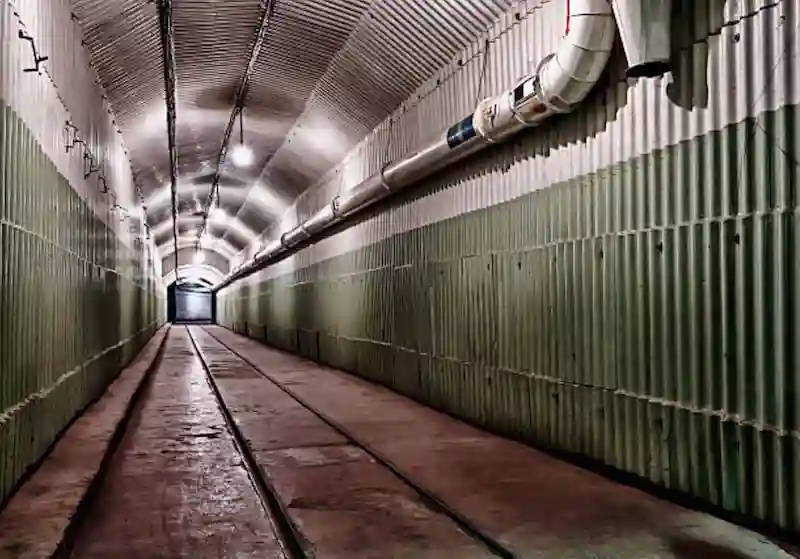
Excavation and Site Preparation Costs
Before you can even start thinking about dropping a shipping container underground, there’s a big task to solve first — preparing your site. Excavation and site preparation are foundational steps, literally and financially, and the costs depend on these factors:
- The soil you’re working with. Soft, sandy soil is easier to dig through, meaning lower equipment costs and less time on the job, but rocky or clay-heavy soil will slow down progress and require specialized equipment.
- Drainage and waterproofing needs. You’re not just digging a hole; you’re creating a safe and durable space underground, so think about water management. Poor drainage for waterlogged areas will lead to flooding if you don’t add drainage systems or grade the site to manage runoff.
- Depth of the excavation. Shallow projects that only require a few feet of digging will cost less than bunkers designed to sit several stories underground. The deeper you go, the more labor and equipment you’ll need, plus there’s added complexity in stabilizing the site to prevent collapses during the dig.
- Site complexity. Working with sloped or uneven ground means adding retaining walls or taking extra safety precautions, all of which add to your bottom line. Rural areas or remote locations also spike costs due to transporting equipment to the site.
Excavation often comes with hidden costs. For example, you may need to pay for soil testing to ensure the ground can hold the weight of your container without shifting over time. If your site requires permits, inspections, or environmental checks, you’ll need to budget for those as well.
Structural Modifications and Reinforcements
Shipping containers are designed to handle heavy loads on their corners, not the pressure from surrounding soil or the weight sitting on top when buried, and this is why structural modifications and reinforcements are necessary to keep your bunker safe and strong:
- Once buried, the walls of a shipping container face intense horizontal pressure from the surrounding soil. Without reinforcement, they will bow, bend, and even collapse over time, so you’ll need to add steel braces or reinforce the walls with concrete. Many people also add interior steel framing or weld external reinforcements around the container’s sides.
- The roof of a shipping container isn’t built to bear significant weight, and when used underground, it needs to support the weight of soil, plants, or even vehicles depending on what’s above it. One of the most useful ideas, in this case, is to install steel support beams and replace or reinforce the roof with a thicker steel plate or concrete layer to prevent sagging or collapse under the added load.
- Many builders coat the container with heavy-duty waterproof sealants or even wrap it in special membranes designed to block moisture. They also add a drainage system around the perimeter of the bunker to safeguard against water buildup.
- Being underground means a ventilation system is needed to circulate fresh air into the bunker and remove stale air. Install ventilation pipes with weather-resistant covers, along with manual or powered fans to ensure air movement.
- Standard shipping containers come with wooden floors that are treated with pesticides, unsuitable for an underground living space. Many builders replace them with non-toxic materials like concrete slabs or new steel flooring.
- Doorways and ventilation openings are natural weak spots in your container’s structure, so seal these areas properly to prevent water leaks or soil intrusion.
Structural modifications aren’t cheap, but with walls that can hold up to soil pressure, a reinforced roof to carry the load above, and effective systems for keeping moisture out and air flowing, you’ll be able to rely on your bunker in any situation, even if it’s a bomb explosion.
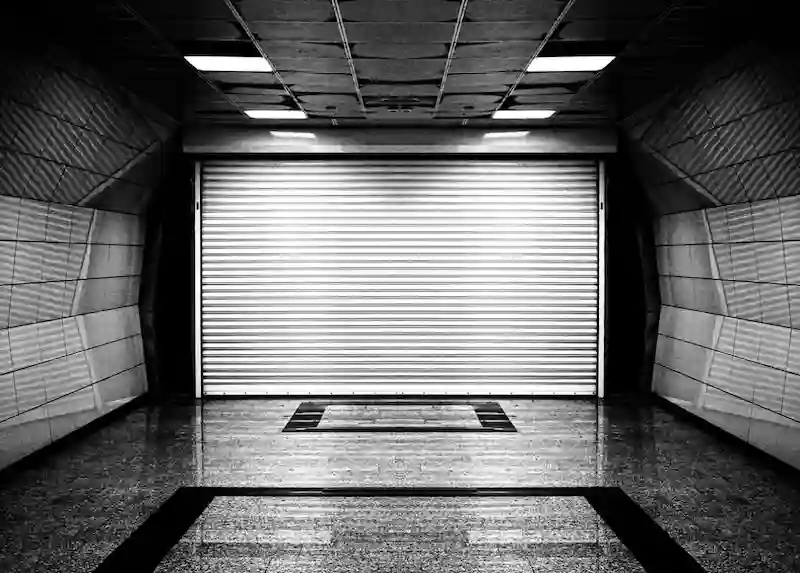
Location-based Cost Variations
If you’re in an area with higher labor costs, like major metropolitan cities, hiring excavation teams and construction crews will cost double, or even triple, what you’d pay in a smaller town or rural area. For example, heavy equipment operators in urban areas cost $100 an hour on average, compared to $50–$60 in more affordable rural spots.
Shipping containers, heavy-duty steel, and other essentials for shelter construction are cheaper when they’re sourced locally, but if you live in a remote area, transporting these materials to your site will inflate costs.
The local climate also affects costs: areas prone to heavy rainfall, snow, or flooding require extra waterproofing and drainage systems; hot climates mean shelling out for advanced cooling and ventilation. But areas with stable, dry weather allow for simpler (and cheaper) designs.
Also, different locations come with their own set of rules and fees for permits, inspections, and zoning. For instance, urban areas have stricter building codes and higher permitting costs, and some cities require environmental impact studies, soil testing, or additional inspections that will raise your expenses. Rural areas, on the other hand, have fewer regulations but don’t assume they’re free of red tape. Even in less regulated places, you will still need to pay fees for land use permits or work with local officials to comply with basic safety standards.
Additional Features Affecting Cost
The container and excavation are the foundation of the project, but there are also additional features that can make your bunker a space you’d want to use in an emergency (or even just for fun):
- security systems (cameras, motion sensors, biometric access, etc.);
- energy sources (basic electrical wiring, solar panels, diesel or propane generators);
- interior design and comfort (metal shelving, fold-out cots, built-in furniture, vinyl flooring, insulated walls, lightning, etc.);
- emergency supplies (non-perishable food, water filtration systems, medical kits, basic tools, etc.);
- climate control (air conditioning, dehumidifiers, heating systems, insulation);
- communication systems (ham radios, satellite communication setups, etc.);
- waste management solutions (composting toilets, septic tanks, incinerator systems);
- water storage and filtration.
All these ideas add more comfort and security but also cost more, so think about what you really need and what you just want.
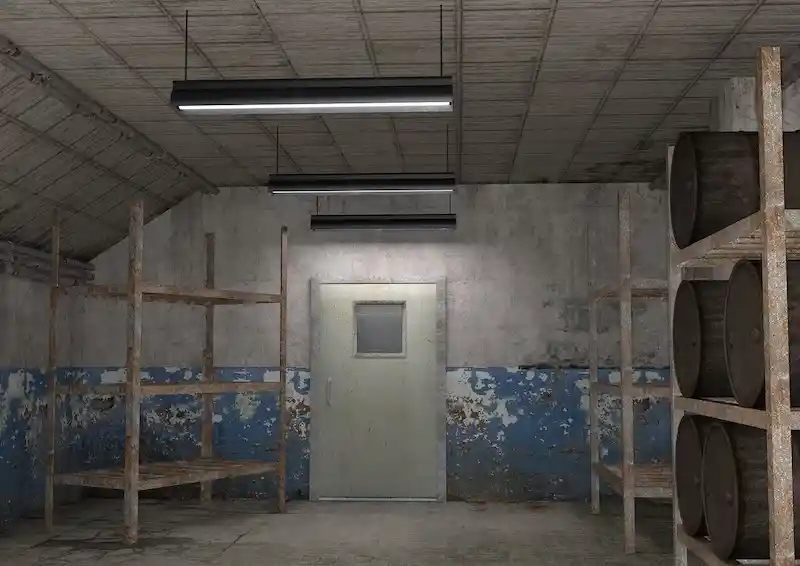
Tips to Save Costs Without Compromising Safety
Building an underground bunker will drain your wallet, but you can save costs without cutting corners on safety due to these tips:
- Labor costs quickly add up, so take on some tasks — painting, installing shelving, laying down flooring — yourself.
- Start with the basics like proper structural reinforcements, ventilation, and waterproofing, then expand or add extras.
- Source recycled or lightly used materials — secondhand steel, surplus construction supplies, and used shipping containers that are still in good condition in local classifieds, online marketplaces, and recycling depots.
- Instead of complex layouts with multiple compartments or custom shapes, opt for a single-container design.
- To cut down on transportation fees, try to source materials and hire contractors locally.
- There’s no rule saying you need to complete your bunker all at once. Instead, plan for phased construction: start with excavation and reinforcement, then add upgrades like solar panels, interior comforts, or advanced security over time.
- Use natural climate control, for example, bury your container deeper in the ground.
- Get clear on permits and building requirements before you start.
Be smart about your bunker, and you won’t break the bank when bringing your dream to life.
Conclusions
Building a bunker out of a shipping container is a story you’re crafting, one welded seam at a time, and it should provide peace of mind for your wallet as well, so balance what you need and what fits your budget. The expenses will stack up, but you can stretch every dollar without compromising on the safety of your secret escape, just use our tips and plan.
Vanessa is a dedicated writer and content enthusiast at Pelican Containers. With a background in practical writing and a keen eye for clarity, she transforms complex container topics into easy-to-understand and useful content. Her passion lies in exploring the evolving world of container usage — from smart storage hacks to global logistics trends.
When she's not writing, Vanessa loves discovering creative shipping container projects or traveling to find new inspiration.
Explore thoughtful, informative, and accessible content with Vanessa!
Vanessa is a dedicated writer and content enthusiast at Pelican Containers. With a background in practical writing and a keen eye for clarity, she transforms complex container topics into easy-to-understand and useful content. Her passion lies in exploring the evolving world of container usage — from smart storage hacks to global logistics trends.
When she's not writing, Vanessa loves discovering creative shipping container projects or traveling to find new inspiration.
Explore thoughtful, informative, and accessible content with Vanessa!
FAQ
How does the size of the container affect the overall bunker cost?
Larger containers cost more upfront, impact transportation fees, and require more materials for structural reinforcements, insulation, and interior finishing, but offer more space for storage, utilities, or extra rooms.
What excavation and site preparation costs should I expect?
Excavation costs depend on the size of your container, soil conditions, and the depth you plan to go. You’ll also need to factor in site preparation tasks like leveling the ground, removing debris, and installing drainage systems to protect against water damage.
What are the costs of installing utilities like electricity and plumbing inside the bunker?
Utilities quickly add up, depending on the complexity of the systems you need: wiring for electricity, installing outlets, and setting up a ventilation system are essential; plumbing costs will include piping, water storage, and possibly a septic system if you plan to stay self-contained. On average, these features start at a few thousand dollars and climb depending on the level of customization and quality.
How do location and local regulations influence bunker construction costs?
Labor rates, material availability, delivery fees, and local regulations vary by region, so always check with your local authorities early in the planning process.
What are the expenses related to insulation and climate control?
Good insulation keeps the space comfortable and energy-efficient; heating, cooling, and dehumidification maintain proper air quality. Their costs depend on the materials you choose and the technology you invest in, ranging from a few hundred to thousand dollars.
